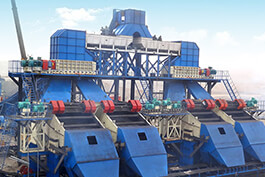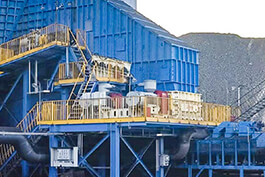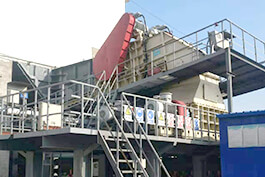Introduce
As an important crushing equipment for processing various minerals in industrial production, the stable operation of Mineral Sizer is attributed to the precise coordination and collaborative work of numerous internal components.
In the complex system composed of these components, the functional division is very clear: some components directly participate in the material crushing process, breaking large pieces of material into the required particle size through their own movement; While some other components quietly undertake the responsibility of protecting the main body of the equipment. Among these protective components, wear-resistant liners play an irreplaceable and crucial role in mineral sizer's safe production process.
What is Mineral Sizer's wear-resistant liner
In the internal structure of Mineral Sizer, wear-resistant liners have specific installation positions and unique working properties. It is installed inside the casing and maintains an appropriate gap with the main crushing components of the equipment. When the equipment starts for crushing operations, after the materials enter the crushing chamber, they will continuously collide and squeeze with the liner under the high-speed rotation of the crushing toothed rollers.
It is precisely through this repeated interaction that the materials can be crushed to the required size. This means that wear-resistant liners need to come into direct contact with materials of various hardness and shape, constantly enduring the intense impact and continuous wear brought by the materials.
Due to the long-term exposure of Mineral Sizer to high-intensity crushing operation environments, wear-resistant liners are typical consumable components. As the working time accumulates continuously, various internal components will gradually show signs of wear and tear under the action of materials. When the degree of wear exceeds a certain limit, the operational efficiency of mineral sizer will drop significantly, and it may even be unable to carry out crushing work normally.
The existence of wear-resistant liners is like building a barrier inside the equipment. It actively withstands most of the impact and wear from materials, effectively reducing the wear and tear of key internal components, lowering the possibility of mineral sizer's work efficiency being affected by part damage, and also reducing the costs incurred from frequent replacement and maintenance of parts.
The core function of wear-resistant liners
Extend the service life
Wear-resistant liners themselves possess excellent hardness and wear resistance, which enables them to maintain structural stability during long-term contact and friction with materials. It isolates the main body of the mineral sizer from the material, preventing the material from directly eroding and wearing the main body of the equipment. This fundamentally slows down the aging speed of the main body of the equipment and significantly extends the overall service life of the equipment.
Optimize the crushing effect
The design of the liner is not arbitrary; its shape and arrangement have all been carefully studied and designed. Different shapes and arrangements can guide the flow trajectory of materials in the crushing chamber, allowing the materials to move along the path most conducive to crushing. In this way, the materials can be crushed more thoroughly and evenly in the crushing chamber, avoiding the accumulation of local materials or insufficient crushing. This makes the crushing process smoother and more efficient, significantly improving the crushing efficiency of mineral sizer.
The equipment is operating stably
A reasonable liner design can skillfully disperse the huge impact force generated by the material during the crushing process, avoiding damage caused by the concentrated impact force acting on a certain part of the equipment. Meanwhile, this design can also reduce the energy consumption during the operation of the mineral sizer, allowing the equipment to maintain stable operation at a lower energy consumption state. In addition, the material selection of the liner also needs to be determined based on the characteristics of the crushed materials. For materials with higher hardness, materials with stronger wear resistance should be chosen. For materials with certain corrosiveness, the anti-corrosion ability of the material should be considered to ensure that the liner can adapt to diverse crushing requirements and guarantee the stable operation of the mineral sizer.
.jpg)
Fixation of wear-resistant liners
For the wear-resistant liner to fully play its role in protecting mineral sizer and assisting in crushing, the prerequisite is that it must be installed and fixed firmly and reliably. If the installation process is not standardized and the fixation does not meet the standards, the liner plate is very likely to become loose or even fall off during the operation of the equipment.
This not only causes the liner to lose its due function, affecting the normal operation of the mineral sizer, but also may lead to collisions with other components due to the liner's detachment, causing safety accidents. Therefore, the installation and fixation of the liner plate is of vital importance and must be carried out strictly in accordance with the specifications.
In Mineral Sizer, countersunk bolts are the key connectors for fixing wear-resistant liners. Its design is very ingenious. The head is conical and can be precisely embedded in the 90-degree conical cavity pre-processed on the wear-resistant liner.
This design enables the bolt head to remain flush with the surface of the liner plate, ensuring the stability of the connection while avoiding a series of problems caused by the protrusion of the bolt head.
The important role of countersunk bolts
Achieve a stable connection
The countersunk bolts can firmly fix the Mineral Sizer wear-resistant liner at the corresponding position of the equipment through a tight fit with the conical grooves on the liner. When the equipment is performing high-intensity crushing operations, it will generate intense vibrations and impacts. Countersunk bolts can resist the influence of these external forces, effectively preventing the liner from loosening or shifting, and providing a solid guarantee for the normal operation of the machine.
Protective bolts and liners
As the head of the countersunk bolt remains flush with the surface of the wear-resistant liner, during the operation of the mineral sizer, the material mainly comes into contact with the surface of the liner, significantly reducing the direct impact and wear of the material on the bolt. This not only protects the bolts and extends their service life, but also indirectly safeguards the liner plate, avoiding the problem of liner plate fixation failure caused by bolt damage.
Ensure uniform force distribution
The conical head design of the countersunk bolt enables the clamping force generated when the bolt is tightened to be evenly distributed on the contact surface where the liner is connected to the mineral sizer. This uniform force state enhances the stability of the wear-resistant liner plate under the dynamic load of the equipment. Even when the equipment is subjected to constantly changing impact forces during operation, the liner plate can always maintain a good condition and will not deform or be damaged due to excessive local force.
The advantages of the countersunk bolt fixation method
Reduce wear and tear
The head of the countersunk bolt is flush with the surface of the wear-resistant liner plate, ensuring that during the operation of the equipment, the material flowing in the crushing chamber will not collide or rub against the protruding head of the bolt. This prevents the protruding parts from being worn by the materials inside the mineral sizer, fundamentally reducing the risk of wear on bolts and liners, significantly extending their service life, and reducing the replacement frequency caused by wear.
Operational safety
The flat surface makes the space inside the Mineral Sizer crushing chamber more regular, reducing the possibility of material accumulation or jamming due to encountering protrusions during flow. The materials can pass through the crushing chamber smoothly, avoiding equipment operation failures caused by material blockage, such as equipment overload and shutdown, which greatly improves the safety of the operation process and reduces the probability of safety accidents caused by equipment failure.
Easy to maintain
The flush design of the countersunk bolts makes the internal structure of the Mineral Sizer's crushing chamber more concise, without protruding bolt heads that hinder the operation of maintenance personnel. When cleaning the equipment, the cleaning tools can more easily reach every corner of the crushing chamber and thoroughly remove the residual materials. When conducting equipment inspections, maintenance personnel can observe the status of the liners and other components more clearly and promptly identify potential problems. At the same time, when replacing the wear-resistant liner, the protrusion of the bolt head will not increase the difficulty of disassembly and installation, simplifying the replacement and daily maintenance of the mineral sizer wear-resistant liner.
Connection stability
Whether it is countersunk bolts with grooves or tenons, they all have a strong locking capacity and can provide stable and reliable fixing force for wear-resistant liners. During the operation of the equipment, intense vibration and shock will occur. However, countersunk bolts can resist the effects of these external forces by relying on their structural features and locking force, ensuring that the liner remains stable at all times and will not loosen or shift, thus guaranteeing the normal operation of the mineral sizer.
Adapt to harsh working environments
The environment inside the crushing chamber of Mineral Sizer is usually harsh, filled with abrasive materials and dust. The embedded design of countersunk bolts enables them to avoid direct exposure to such harsh environments, reducing the corrosion and wear of the bolts caused by materials and dust. This enables the bolts to maintain good performance during long-term use, ensuring the long-term reliability of the equipment in harsh environments and reducing equipment failures caused by bolt damage.
Conclusion
Wear-resistant liners play an indispensable role in Mineral Sizer. They provide effective protection for the equipment with their own characteristics, extend the service life of the equipment, and at the same time optimize the crushing effect and improve work efficiency through reasonable design. The fixing method of countersunk bolts provides a solid guarantee for the wear-resistant liner to function.
Its unique design brings many advantages, ensuring the stability of the liner and the safety and reliability of the equipment. Only by making the wear-resistant liners work in coordination with the appropriate fixing methods can Mineral Sizer maintain an efficient and stable operating state in long-term crushing operations, providing continuous and strong support for related industrial production work.


.jpg)
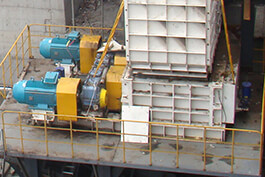

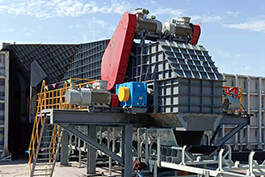
.jpg)
